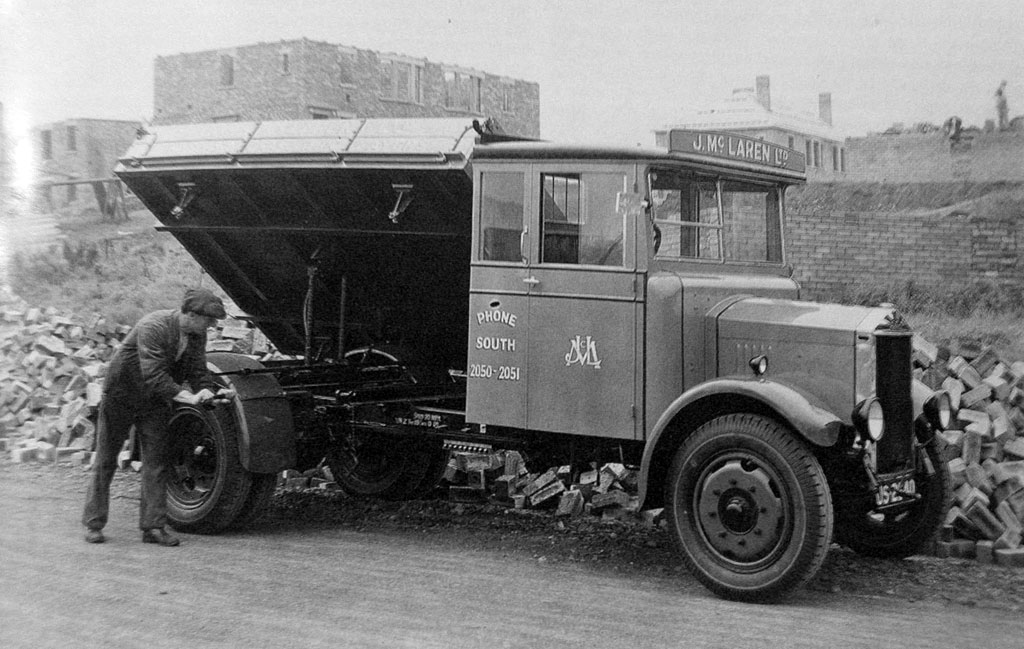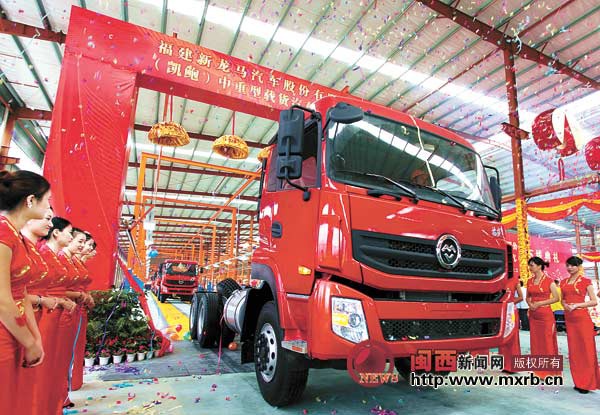Albion
Commercial
Albion Model 40 / 41 / 43
Model 40. 1928-1929. The replacement for the 30 cwt Model 24 was introduced in 1928 with two versions, one of which was the ‘home’ Model 40, powered by the 4 cylinder EN52C of 36 hp. Like the Model 41, a new combined engine and gearbox unit was used, with an open clutch ‘pit’ for easy access, and three-point mounting of the complete unit. A centrally mounted gear lever was introduced in 1930.
Identified by 5 bonnet louvres, its similar looking Model 24 predecessor had 6 louvres, and was more likely to have solid tires all round. The Model 40 employed an underslung worm drive which allowed a lower floor height without the intrusion of the worm gear. Transmission braking had now been abandoned on this lighter model at least, in favor of more conventional methods with both hand and foot brakes operating shoes in 17″ drums at the rear. An unusual feature of this pneumatic only model was the inclusion of a spare wheel with a solid tire to ensure a usable spare at all times.
Model 41. 1928-1935. The companion to the Model 40 was the ‘export’ Model 41, also rated at 30 cwts and with a technical specification generally similar to the Model 40. The principal difference was in the use of an overhead worm drive to increase ground clearance under the rear axle from 8″ to 10″ and intended for the unmade roads more likely in export markets at that time. In practice, this model was also sold in the UK and with its higher floor line was more common as a van or light lorry where floor height is or less importance. The Model 41 was also used as a school children’s ambulance for the transport of children with special needs.
Model 43. 1931-1936. The bonneted 2-ton Model 43 was based on the 30 cwt Model 40 but with a deeper 7″ frame, larger tyres, 12′ 6″ (ca. 4 m) wheelbase and overall length of 19′ 7″ (ca. 6 m). Fitted with the 3.2 litre EN58, this engine was rated at 42 hp, similar to the Model 40s 36 hp EN52C, but with a 3/8″ longer stroke and notable for its large bearings to extend overhaul intervals. Using a single cylinder head and dry liners, the engine also had a Zenith carburetor and some Ricardo influence from a split induction system and shrouded inlet valves. Four wheel braking was employed and the handbrake used a separate set of rear shoes.
Predecessor: Albion Models 24 / 27 / 31 / 34
Successor: Albion Model 118 / 122
Related models:
Albion Model 41 Overtype / 44 / 47 / 51 / 53
















